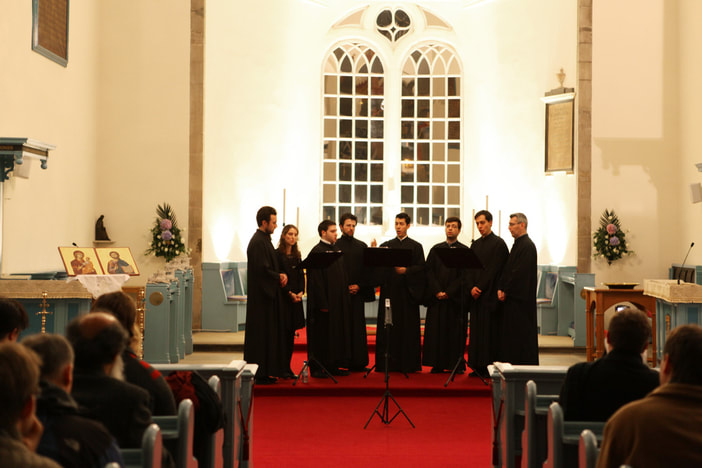|
'Byzantine Melodists' aims to promote Byzantine Chant as a distinct musical genre through concerts and workshops. It is made up of professional chanters and musicians.
Byzantine chant is a form of sacred chant whose origins lie in the traditions of early psalmody and the music of the ancient world. It flourished in the Byzantine Empire, which at its height spanned the Mediterranean and whose rich history from the 4th century AD onwards endured for over a thousand years during which time the Chant would have echoed in the great churches of Constantinople and in the great cities and monasteries of the Byzantine world. After the fall of the Queen of Cities in 1453, Byzantine chant continued to develop, transmitted by master musicians both from Ottoman-ruled Constantinople as well as other regions, including Mount Athos and Venetian-ruled Crete.
Byzantine chant is vocal and monophonic, and is sung a capella. It is modal employing 8 modes, and the melody is expressed in a range of fine microtonal musical intervals. The only adornment to the melody is the steady tone of a second voice, which complements and emphasises the modal nature of the music. It has its own unique notation system which is preserved in manuscripts, some of which date back to beyond the ninth century. In character Byzantine Chant ranges from simple syllabic melodies that follow the accentuation of sacred poetic texts, to melismatic hymns in which single phrases last for several minutes. The effect is profound and moving and echoes with a deeply rich history and tradition. A Russian Abbess on first experiencing an All Night Vigil celebrated in Byzantine chant, observed, "That is music one could go on singing for a thousand years. It is the music of the Desert". |
